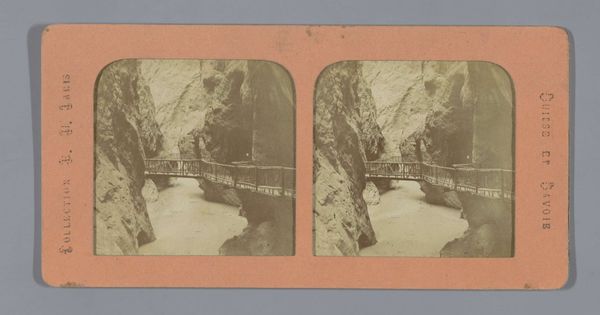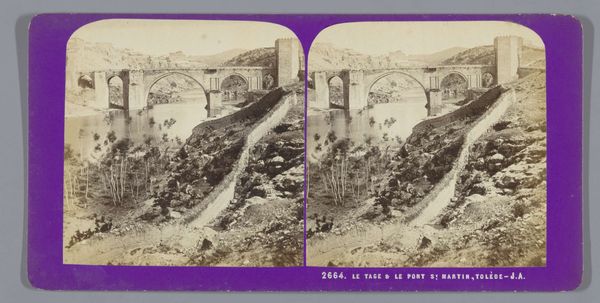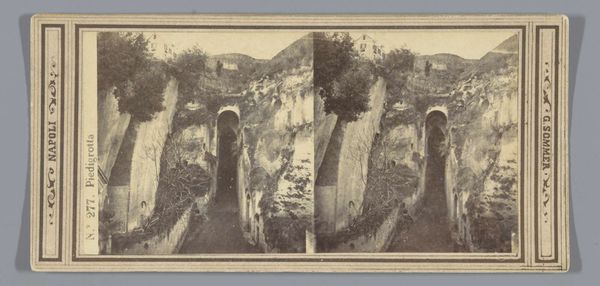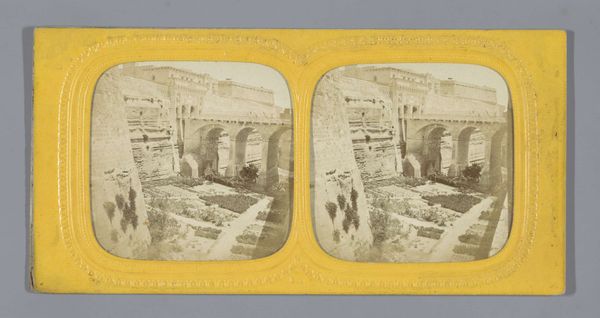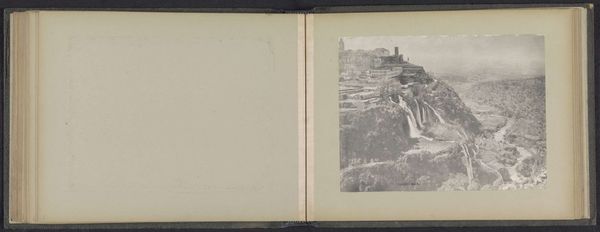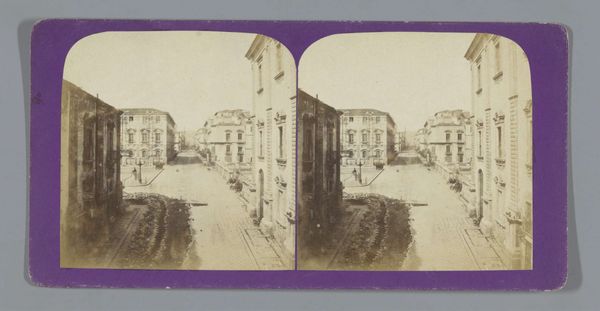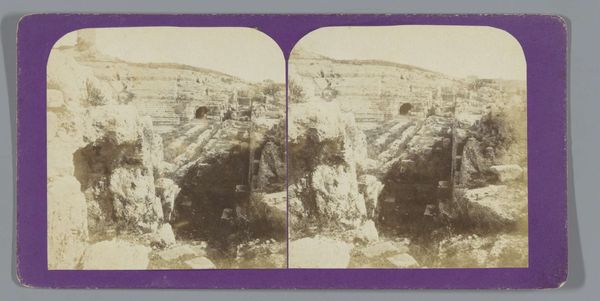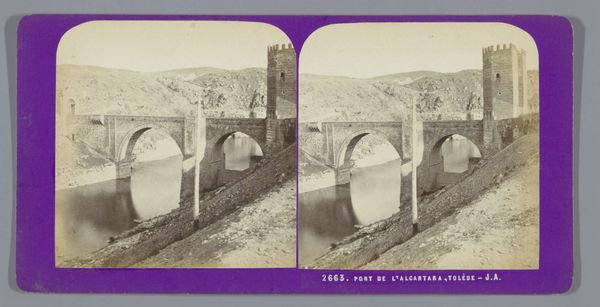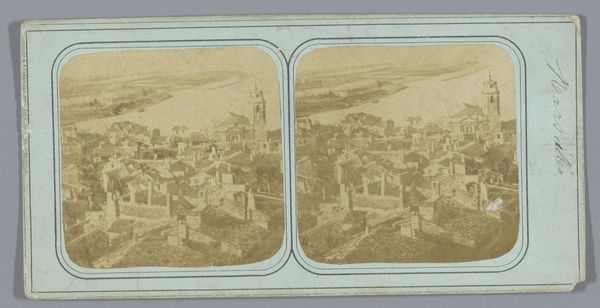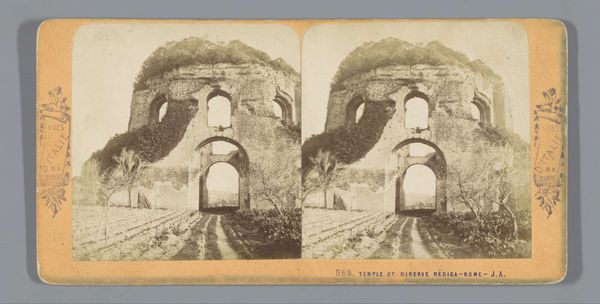
Gezicht op de entree aan de oostzijde van het Griekse theater van Syracuse 1862 - 1876
0:00
0:00
print, photography, gelatin-silver-print
# print
#
greek-and-roman-art
#
landscape
#
photography
#
coloured pencil
#
gelatin-silver-print
Dimensions: height 88 mm, width 176 mm
Copyright: Rijks Museum: Open Domain
Editor: We're looking at "Gezicht op de entree aan de oostzijde van het Griekse theater van Syracuse" by Jean Andrieu, dating from 1862 to 1876. It's a gelatin-silver print, part of a stereograph. The light in this photograph, or pair of photographs I suppose, is incredibly striking! It creates such a dramatic effect, highlighting the textures of the stone. How do you interpret this work in terms of its structure and composition? Curator: Indeed. Observe how Andrieu employs the stereographic format not merely as a representational tool but as a device that enhances the very structure of perception. The duplicated image, with its subtle variations, compels the eye to oscillate, thereby underscoring the architecture's inherent geometry and the palpable presence of light and shadow. Note how the archway acts as a frame within a frame, leading the viewer's eye towards a distant vista. This nested structure directs our gaze but it also highlights the material nature of the photograph itself as a constructed object. What significance do you ascribe to this play of depths and surfaces? Editor: Well, I find that it calls attention to how the photograph presents this physical location not as a seamless scene, but as a compilation of constructed views and architectural elements. Can we then also address how this composition highlights a tension between documentation and artistic interpretation? Curator: Precisely. Andrieu’s photographic approach isn't simply a record of architectural space but a conscious arrangement of elements. The controlled tonality and perspective, typical of gelatin-silver prints, further abstract the site, accentuating form over pure documentation. Do you find that this emphasis changes our interaction with the image and the depicted theater itself? Editor: Yes, because I now feel prompted to think about photography itself as a constructed, interpreted, and intentional creation, not a "snapshot". It prompts considerations about medium and artistic decision. Thank you for illuminating those facets for me. Curator: You’re welcome. I found our discussion rewarding. By focusing on the formal attributes, the materiality, we’ve elucidated Andrieu’s vision and its aesthetic intentions in ways I hadn't previously fully appreciated.
Comments
No comments
Be the first to comment and join the conversation on the ultimate creative platform.


